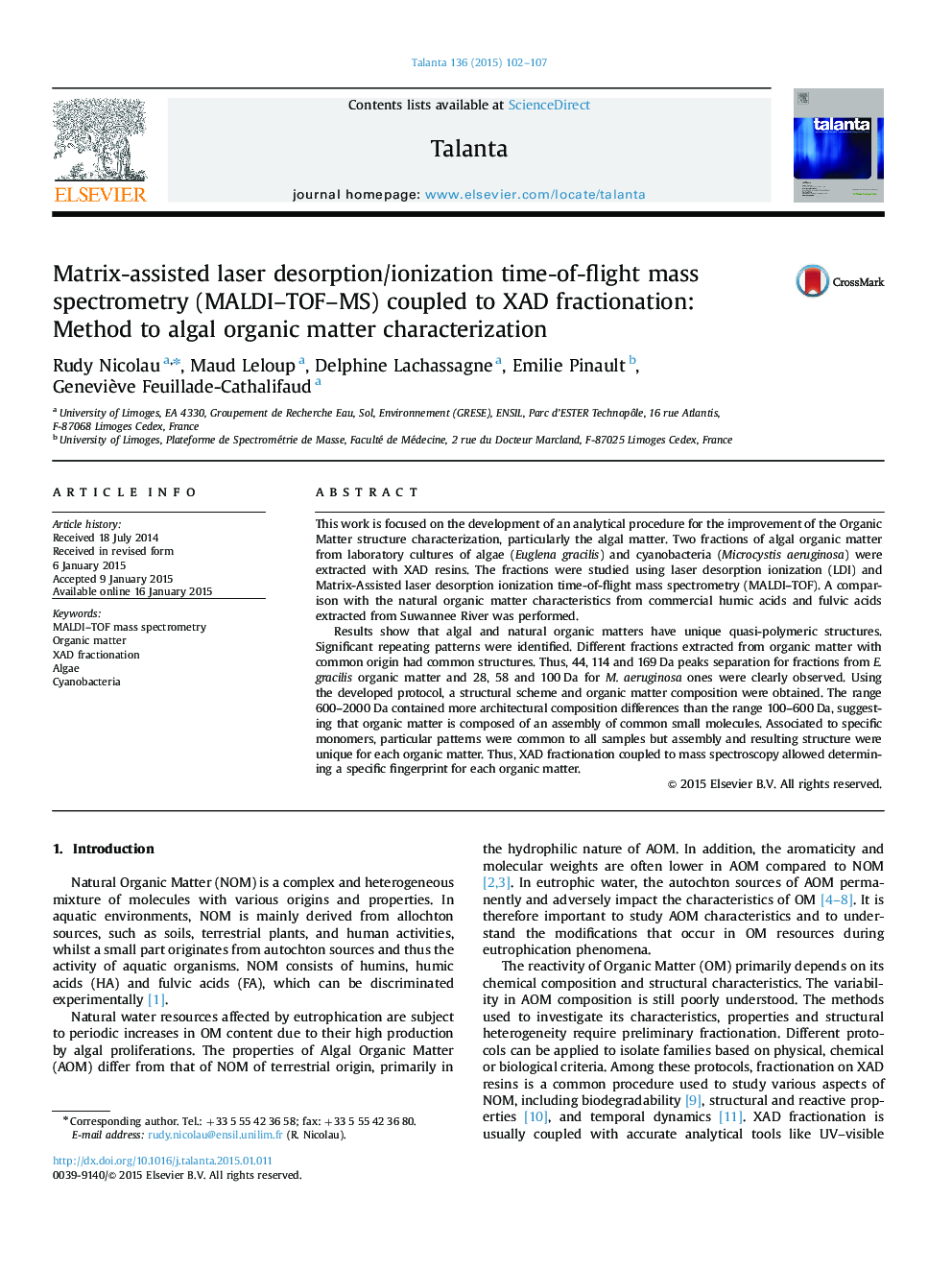| Article ID | Journal | Published Year | Pages | File Type |
|---|---|---|---|---|
| 1241931 | Talanta | 2015 | 6 Pages |
•XAD fractionation coupled with LDI/MALDI–TOF–MS, a reliable tools to AOM and NOM characterization.•AOM and NOM have polymeric structures with common small “building blocks”.•Origin of fractions has a major influence on the structure of organic matter.•Polysaccharides predominant in AOM and proteins in NOM.
This work is focused on the development of an analytical procedure for the improvement of the Organic Matter structure characterization, particularly the algal matter. Two fractions of algal organic matter from laboratory cultures of algae (Euglena gracilis) and cyanobacteria (Microcystis aeruginosa) were extracted with XAD resins. The fractions were studied using laser desorption ionization (LDI) and Matrix-Assisted laser desorption ionization time-of-flight mass spectrometry (MALDI–TOF). A comparison with the natural organic matter characteristics from commercial humic acids and fulvic acids extracted from Suwannee River was performed.Results show that algal and natural organic matters have unique quasi-polymeric structures. Significant repeating patterns were identified. Different fractions extracted from organic matter with common origin had common structures. Thus, 44, 114 and 169 Da peaks separation for fractions from E. gracilis organic matter and 28, 58 and 100 Da for M. aeruginosa ones were clearly observed. Using the developed protocol, a structural scheme and organic matter composition were obtained. The range 600–2000 Da contained more architectural composition differences than the range 100–600 Da, suggesting that organic matter is composed of an assembly of common small molecules. Associated to specific monomers, particular patterns were common to all samples but assembly and resulting structure were unique for each organic matter. Thus, XAD fractionation coupled to mass spectroscopy allowed determining a specific fingerprint for each organic matter.
Graphical abstractFigure optionsDownload full-size imageDownload as PowerPoint slide
